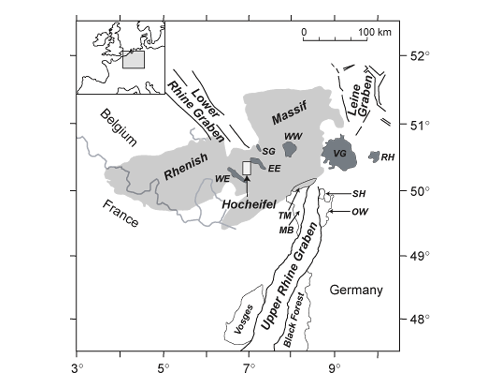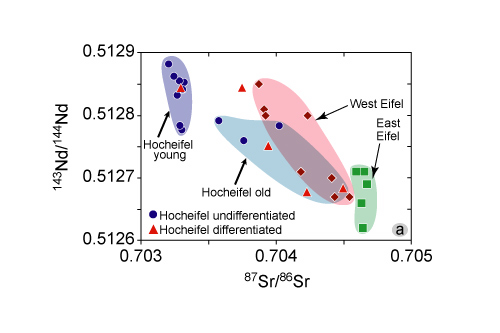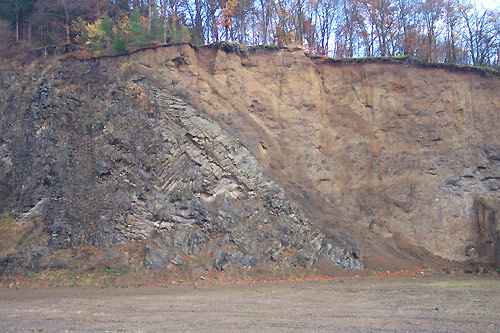

Young volcanic fields in Central Europe were mainly active in the Tertiary. However, sporadically the younger human history (as young as ca. 9 ka) was also affected by volcanic catastrophes. The activity of the volcanic fields is on one hand genetically related to a mantle plume (e.g., Quaternary Eifel volcanism), on the other hand extension related to large-scale rifting is suggested as being responsible for melt generation (e.g., Tertiary Eifel volcanism). Detailed knowledge on age succession, petrogenesis and chemical composition of the mantle sources helps to understand the cause(s) of volcanic activity and its geodynamic evolution.
Recent publications related to this topic
Fekiacova, Z., Mertz, D.F., Renne, P.R. (2006): Geodynamic setting of the Tertiary Hocheifel volcanism (Germany), Part I: 40Ar/39Ar geochronology. - In: Ritter, J.R.R. & Christensen, U.R. (eds.): Mantle Plumes - A multidisciplinary approach, Springer (in press)
Fekiacova, Z., Mertz, D.F., Hofmann, A.W. (2006): Geodynamic setting of the Tertiary Hocheifel volcanism (Germany), Part II: Geochemistry and Sr, Nd, Pb isotope compositions. - In: Ritter, J.R.R. & Christensen, U.R. (eds.): Mantle Plumes - A multidisciplinary approach, Springer (in press)

Cenozoic volcanic fields in western Central Europe. WE = West Eifel, EE = East Eifel, SG = Siebengebirge, WW = Westerwald, VG = Vogelsberg, RH = Rhön.

Differing isotope variations indicate differences in source chemistry between Quaternary plume and Tertiary extension-related basalts of the Eifel volcanic fields.

Diatreme in basalt (Tertiary Westerwald volcanic field). The contact runs diagonally in the center of the picture.